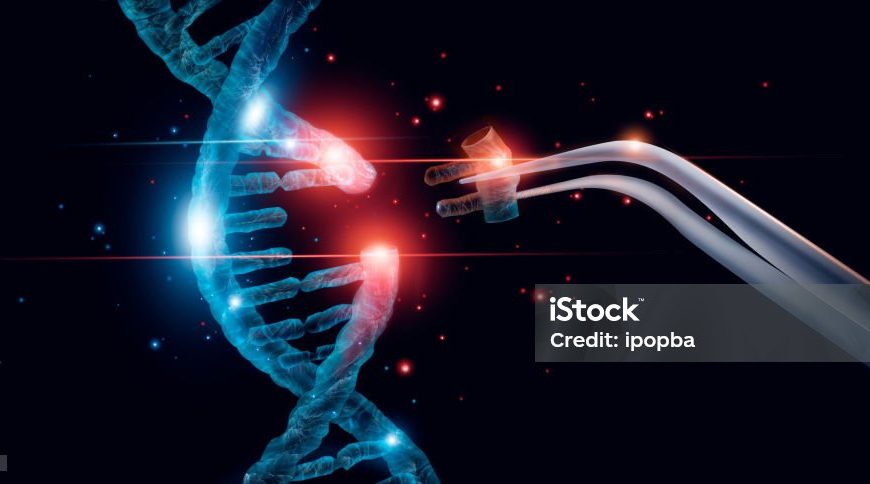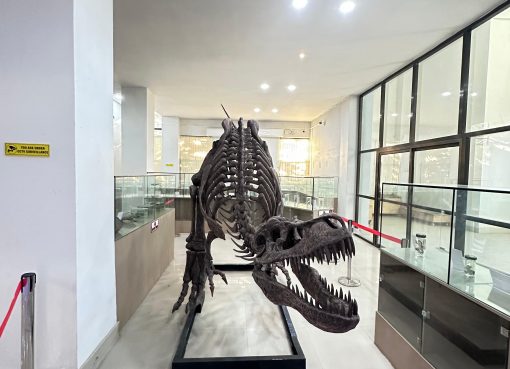Neelabh Datta
Undergraduate student
Department of Biochemistry, Asutosh College (Affiliated to University of Calcutta), 92, Shyamaprasad Mukherjee Road, Kolkata West Bengal, 700026, India
Email: neelabhdatta@gmail.com
The Enigma(tic) Code-Breaking
The year was 1945, and the world was witnessing the end of a devastating war that claimed millions of lives. Among the many factors that contributed to the Allied victory, one stands out as a remarkable feat of human ingenuity and intelligence: the cracking of the enigma code. This was the secret cipher used by the Nazis to communicate their military plans and operations, encrypted by a sophisticated machine that resembled a typewriter. The Allies managed to obtain an enigma machine from the Polish resistance, and then assembled a team of brilliant mathematicians and cryptographers, such as Alan Turing and Gorden Welchman, to decipher the code. They set up a secret facility at Bletchley Park, where they used various methods and machines, including the early prototypes of computers, to intercept and decode the German messages. This gave them access to crucial information that helped them anticipate and counter the enemy’s moves. However, this advantage came with a heavy burden: they had to be careful not to reveal their source of intelligence, or else the Nazis would change the code and render their efforts useless. They also had to deal with the ethical dilemma of choosing which messages to act upon and which to ignore, knowing that their decisions could save or cost lives.
Unravelling the Genetic Code
Fast forward to the 21st century, and the world is witnessing another breakthrough in the realm of code-breaking: the decoding of the human genome. This is the sequence of nucleotides that make up the DNA, the molecule that carries the genetic information of every living organism. Scientists have long suspected that DNA contains the instructions for the development and functioning of all the traits and characteristics of an organism, from eye colour to muscle strength to disease susceptibility. However, it was not until the 1950s that they confirmed that DNA is the hereditary material, and then embarked on the quest to unravel its code. The discovery of the genetic code was a collaborative effort of many scientists from different fields and countries. One of the pioneers was George Gamow, a physicist who proposed that the genetic information was encoded by triplets of nucleotides, each specifying one of the 20 amino acids [1]. He also founded the RNA Tie Club, a group of researchers who exchanged ideas and letters on the topic of protein synthesis [1]. Another influential figure was Francis Crick, who co-discovered the structure of DNA with James Watson, and later proposed the central dogma of molecular biology, which states that information flows from DNA to RNA to protein [2]. Crick also suggested the existence of an adaptor molecule, later identified as transfer RNA (tRNA), that mediates the translation of the genetic code into amino acids [2].
The experimental breakthroughs came in the late 1950s and early 1960s, when several groups of biochemists and geneticists developed methods to synthesize artificial RNA molecules and test their ability to direct protein synthesis in cell-free systems. The first codon to be deciphered was UUU, which was shown to code for the amino acid phenylalanine by Marshall Nirenberg and Heinrich Matthaei in 1961 [3]. Nirenberg later collaborated with Philip Leder to develop a technique called the triplet binding assay, which allowed them to determine the amino acid corresponding to each of the 64 possible codons [3]. Meanwhile, Har Gobind Khorana and his team synthesized long RNA chains with repeating nucleotide sequences and used them to produce proteins with known amino acid compositions [4]. These experiments confirmed the accuracy and universality of the genetic code, and revealed some of its features, such as the existence of start and stop codons, and the degeneracy of some codons (meaning that more than one codon can code for the same amino acid). They discovered that the nucleotides are arranged in groups of three, called codons, that correspond to specific amino acids, the building blocks of proteins. They also discovered that some segments of DNA, called genes, encode for specific proteins that perform various functions in the cell. The discovery of the genetic code was a major milestone in the history of molecular biology, as it revealed the molecular mechanism of gene expression and protein synthesis. It also opened new possibilities for manipulating and engineering the genetic material of living organisms, such as creating recombinant DNA, introducing mutations, and designing synthetic genes and proteins. By April 2003, they completed the Human Genome Project, a massive international effort to sequence the entire human genome, consisting of about 20,000 genes and 3 billion nucleotides.
In a landmark achievement, the Telomere-to-Telomere consortium has unveiled a complete version of the human genome. This work has uncovered hundreds of new genes and opens the door to new insights into evolution and disease. The sequencing of an entire human genome has added a whole chromosome’s worth of previously hidden DNA, accounting for the missing eight percent [5]. This missing eight percent, often referred to as “junk DNA” with no clear function, comprises roughly 151 million base pairs of sequence data scattered throughout the genome. For over 20 years, since the completion of the Human Genome Project, this portion of our genome remained unsequenced and unstudied. However, the recent breakthrough has revealed that these long-missing pieces of our genome contain more than mere junk [5]. They include mysterious pockets of noncoding DNA that do not make protein but still play crucial roles in many cellular functions and may lie at the heart of conditions in which cell division runs amok, such as cancer. This gave them access to a wealth of information that could help them understand and manipulate the biological processes of life. However, this advantage also came with a heavy responsibility: they had to be careful not to misuse their knowledge, or else they could cause unintended and harmful consequences. They also had to deal with the ethical challenges of applying their knowledge to human beings, especially when it involves altering the genetic code of future generations.
CRISPR: A Revolution in Genomics
One of the most powerful and controversial applications of the human genome knowledge is gene editing, a technique that allows scientists to modify the DNA of an organism by adding, deleting, or replacing nucleotides. One of the most popular and efficient gene editing tools is CRISPR-Cas9, or simply CRISPR, which was originally discovered in bacteria, where it serves as an adaptive immune system that protects them from viral infections. The system consists of two main components: CRISPR, which are arrays of repeated DNA sequences interspersed with spacers derived from previous viral invaders, and Cas, which are genes that encode proteins that act on the CRISPR sequences [6]. The CRISPR-Cas system works by transcribing the CRISPR array into a long RNA molecule, which is then processed into shorter guide RNAs (gRNAs) that match the viral DNA [6]. The gRNAs then guide the Cas proteins to the target DNA, where they cleave it and disable the virus. The CRISPR-Cas system was first identified in 1987, but its function as a bacterial immune system was not revealed until 2005. Since then, several types and subtypes of CRISPR-Cas systems have been characterized, based on their Cas proteins and their target recognition mechanisms. One of the most widely studied and used systems is the type II CRISPR-Cas system, which relies on a single Cas protein, Cas9, and a dual gRNA, composed of a CRISPR RNA (crRNA) and a trans-activating crRNA (tracrRNA) [7].
The breakthrough that transformed the CRISPR-Cas system into a powerful genome editing tool came in 2012, when Jennifer Doudna, a biochemist at the University of California, Berkeley, and Emmanuelle Charpentier, a microbiologist at the University of Vienna, showed that the Cas9 protein and the dual gRNA could be programmed to cut any desired DNA sequence in vitro, for which they were awarded the 2020 Nobel Prize in Chemistry, “for the development of a method for genome editing” [8]. They also demonstrated that the tracrRNA and the crRNA could be fused into a single gRNA, simplifying the system and making it more versatile. This discovery opened the door for using the CRISPR-Cas9 system to edit the genomes of various organisms, including plants, animals, and humans, by introducing targeted mutations, insertions, or deletions. CRISPR has been used for various purposes, such as creating genetically modified crops and animals, correcting genetic defects, and enhancing desirable traits. In 2020, CRISPR was used for the first time inside the human body, to treat a patient with a rare form of inherited blindness. The doctors injected the CRISPR components under the retina of the patient, hoping that they would target and disable a faulty gene that causes the disease. The study is, however, still at its initial stage.
The Peril of Gene Editing
Gene editing has the potential to revolutionize medicine and biotechnology, but it also poses significant risks and ethical issues. One of the main concerns is the possibility of off-target effects, where CRISPR may cut the wrong gene or cause unwanted mutations that could lead to diseases or disorders. Another concern is the safety and efficacy of gene editing in humans, especially when it involves germline editing, which is the modification of the DNA of reproductive cells or embryos [9]. This means that the changes made by gene editing would be inherited by the offspring and future generations, creating permanent alterations in the human gene pool. This raises the question of whether it is right to interfere with the natural course of evolution, and whether it is fair to impose genetic changes on people who have no say in the matter [9]. Moreover, gene editing opens the door to the possibility of creating “designer babies”, where parents could choose the traits and characteristics of their children, such as appearance, intelligence, or personality. This could lead to social inequalities, discrimination, and loss of diversity. In 2019, a Chinese scientist named He Jiankui shocked the world by announcing that he had created the first gene-edited babies, by using CRISPR to modify a gene related to HIV resistance in two twin girls [10]. He was widely condemned by the scientific community and the public, and was sentenced to three years in prison for violating ethical and legal norms [10]. In 2021, researchers announced a CRISPR alternative, labelled obligate mobile element–guided activity (OMEGA) proteins, which are endonucleases found in transposons, and guided by small ωRNAs4 [11]. These proteins have the potential to overcome some of the limitations and challenges of CRISPR, such as off-target effects, delivery, and specificity.
Conclusion
The history of code-breaking shows us that cracking a code is not the end of the story, but the beginning of a new one. The information gained from breaking a code can be used for good or evil, depending on how it is handled and applied. The same is true for the human genome code, which offers us unprecedented opportunities and challenges. How we use this code will shape the future of humanity and will determine how history will judge us.
References
[1] Nanjundiah, V. (2004). George Gamow and the genetic code. Resonance, 9, 44-49.
[2] The Francis Crick Papers. Defining the Genetic Coding Problem, 1954-1957. Retrieved from https://profiles.nlm.nih.gov/spotlight/sc/feature/defining
[3] American Chemical Society National Historic Chemical Landmarks. Deciphering the GeneticCode. http://www.acs.org/content/acs/en/education/whatischemistry/landmarks/geneticcode.html.
[4] Kaiser, C. (2018). Gobind Khorana and the rise of molecular biology. Retrieved from https://science.mit.edu/gobind-khorana-molecular-biology/
[5] Howard Hughes Medical Institute. (2022, March 31). Complete human genome deciphered for the first time. ScienceDaily. Retrieved November 19, 2023 from www.sciencedaily.com/releases/2022/03/220331151528.htm
[6] Hille, F., & Charpentier, E. (2016). CRISPR-Cas: biology, mechanisms and relevance. Philosophical transactions of the Royal Society of London. Series B, Biological sciences, 371(1707), 20150496. https://doi.org/10.1098/rstb.2015.0496
[7] Ishino, Y., Krupovic, M., & Forterre, P. (2018). History of CRISPR-Cas from Encounter with a Mysterious Repeated Sequence to Genome Editing Technology. Journal of bacteriology, 200(7), e00580-17. https://doi.org/10.1128/JB.00580-17
[8] The Nobel Prize in Chemistry 2020. NobelPrize.org. Nobel Prize Outreach AB 2023. Mon. 20 Nov 2023. https://www.nobelprize.org/prizes/chemistry/2020/summary/
[9] Ayanoğlu, F. B., Elçin, A. E., & Elçin, Y. M. (2020). Bioethical issues in genome editing by CRISPR-Cas9 technology. Turkish journal of biology Turk biyoloji dergisi, 44(2), 110–120. https://doi.org/10.3906/biy-1912-52
[10] Greely H. T. (2019). CRISPR’d babies: human germline genome editing in the ‘He Jiankui affair’. Journal of Law and the Biosciences, 6(1), 111–183. https://doi.org/10.1093/jlb/lsz010
[11] Wen Badon, I., Oh, Y., Kim, H. J., & Lee, S. H. (2023). Recent application of CRISPR-Cas12 and OMEGA system for genome editing. Molecular therapy: the journal of the American Society of Gene Therapy, S1525-0016(23)00614-7. Advance online publication. https://doi.org/10.1016/j.ymthe.2023.11.013




